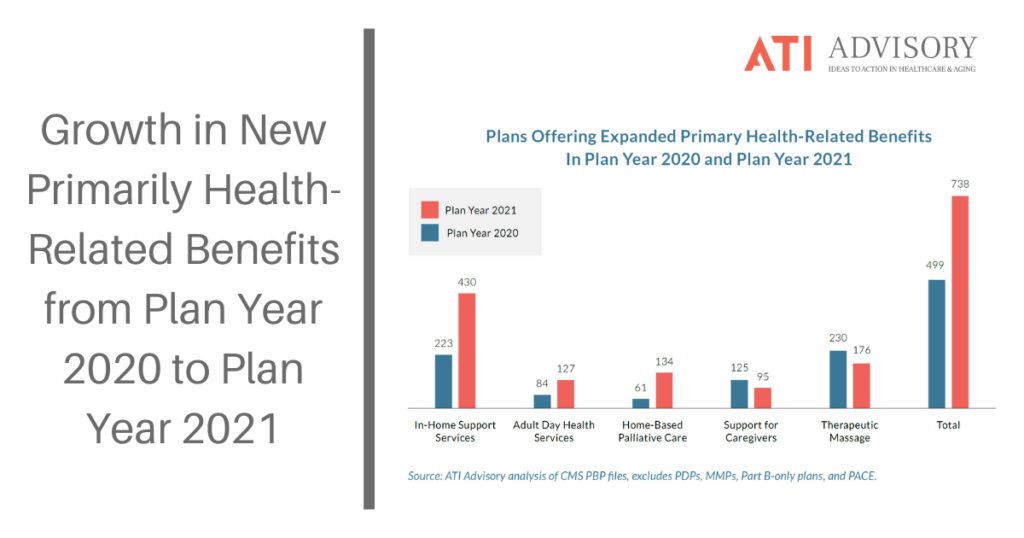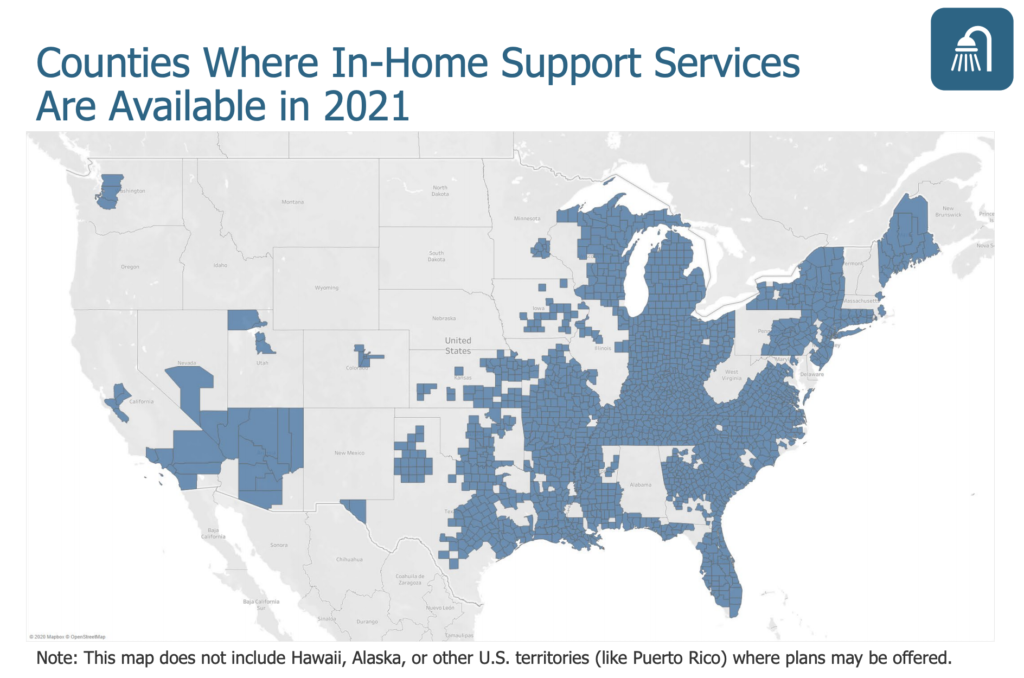Number of MA Plans Offering In-Home Support Services to Increase by 93% in 2021
CMS’s Medicare Advantage preview from September revealed that 738 plans are offering supplemental benefits under the “primarily health-related” pathway in 2021, a 46% increase compared to the nearly 500 plans that did so in 2020.
The preview similarly showed that 920 plans are offering benefits under the Special Supplemental Benefits for the Chronically Ill (SSBCI) pathway next year, a nearly four-fold increase compared to the 245 plans that did so this year.
The latest data from last week offers deeper insights around the primarily health-related pathway, according to ATI analyst Elexa Rallos.
“These data show all of the benefits that the entire universe of Medicare Advantage plans offers,” Rallos told HHCN. “We’re able to go in and really dig into which plans are offering what, then pull all the information on a high level about the availability of these benefits.”
So what’s the big news for home care operators? Of the 738 plans operating in the primarily health-related MA pathway in 2021, 430 are offering “in-home support services,” or services that typically fall under a home care agency’s core business mix.
For context, just 223 plans offered in-home support services through the primarily health-related MA pathway in 2020.

“When we are able to dig into the data a little bit more, we’re able to see that there’s almost a two-fold increase in in-home support services,” Cromer said. “There’s also more than double the number of plans offering home-based palliative care compared to 2020. There’s a lot of growth here — and that growth is being driven by services provided in the home.”
To Cromer’s point, just 61 MA plans offered home-based palliative care under the primarily health-related pathway last year. More than 130 will do so in 2021, a trend that illustrates older adults’ overwhelming preference to age in place and avoid facility-based care.
“I think, again, that reflects the desire to meet Medicare beneficiaries where they are,” Cromer added. “The idea is to give them services that really add value and allow them to stay at home, to live their lives the way they want to.”
Limited benefits
Anthem Inc. (NYSE: ANTM) and WellCare are the leading MA plans offering in-home support services in 2021, according to ATI’s analysis. Both Anthem and WellCare offer in-home support services in more than 100 plans, Rallos noted.
Martin Esquivel, VP of product management and strategic initiatives for Anthem, previously discussed the insurance giant’s approach to supplemental-benefits design with HHCN.
“We recognize that beneficiaries that experience limitations in [ADLs] are at … greater risk for a fall, greater risk of social isolation and more likely to have access-to-care issues,” Esquivel said in October 2019. “Helping create a stable, safe environment in the home, we see that as a first step toward helping beneficiaries down a path toward a more comfortable, sustainable health care experience.”
In addition to those offering in-home support services and home-based palliative care in 2021, 127 plans will offer adult day health services, 176 will offer therapeutic massage and 95 will offer some type of service aimed at caregiver support.
In terms of geography, the MA plans offering in-home support services under the primarily health-related pathway next year operate in 36 states and Puerto Rico. On a county level, there appears to be a particularly strong concentration in New York, Michigan, Indiana, Maine and a handful of other states.

Exactly 11 states have MA plans offering home-based palliative care in at least one county in 2021, according to ATI.
While home care operators should be excited about the spike in plans offering in-home care benefits, they should also remember that most plans are working with limited resources. That means benefits aren’t always robust or equivalent to what home care agencies do for their typical, private-pay client.
“These are limited benefits … that MA plans are providing with limited dollars,” Cromer said. “Benefits we’re seeing are generally ranging from, let’s say, roughly 24 hours to 200 hours a year of services, or per discharge from the hospital.”
Stay tuned on SSBCI
ATI Advisory is currently working on an even deeper analysis of CMS’s Medicare Advantage data dump from Wednesday. Toward the end of this week, the firm hopes to share detailed information on what plans are doing state by state, county by county.
Part of that effort is to give home care operators a better understanding of what MA plans are doing in their individual markets.
As for the SSBCI pathway, which is arguably the even bigger opportunity for the home care industry, ATI Advisory likely won’t have anything new to share until early 2021. CMS releases its MA numbers as part of what’s called the “plan benefit package files,” updated quarterly.
“We expect an additional tranche of data to come out in early 2021,” Cromer said. “And that will include information about Special Supplemental Benefits for the Chronically Ill, along with some other information.”
CMS first introduced the primarily health-related flexibility under MA in 2018 for the 2019 plan year.
Broadly, “primarily health-related” can include services that diagnose, prevent or treat an illness or injury. It can also include services aimed at lessening or improving some sort of functional impairment that hinders an individual’s ability to perform activities of daily living.

